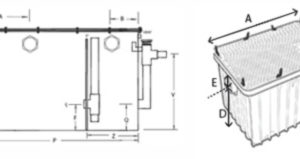A visit to the Canadian Environmental Technology Verification program webpage, http://etvcanada.ca, will reveal a new tab for ISO 14034. What does it mean? That is not a simple question; however this post will try to break it down.
The really short answer is that it should mean a transition from a government sponsored ETV program to a market driven ETV program. Some of the details are as follows.
ISO 14034 will be a new standard for Environmental technology verification (ETV) and performance evaluation. The target audience is primarily verification entities. The standard outlines what these verification entities need to do in order to conduct an ISO compliant environmental technology verification. For example, ISO 14034 will require verification entities to be accredited to the standard ISO 17020. It is not entirely clear at this point whether testing organizations will need to meet ISO 17020 or not.
The ISO 14034 standard is expected to be published mid-2016. It is expected to be adopted by Canada by the end of 2016. It is expected that other nations with active ETV programs will also be adopting this standard, as will the US, though the timing is unknown. In Canada, the current ETV program will be phased out and replaced by the ISO 14034 standard. Environment Canada will then get out of the ETV program and leave it to the market.
The result should mimic what happened with the introduction of ISO 9001 in 1987. Back then, customers demanded that their suppliers be ISO 9001 certified and that became the norm. Now more than 1,000,000 companies, including GHL, have ISO 9001 certification. Going forward, it could be expected that customers will start demanding the suppliers of their environmental technologies to have those technologies verified by a 14034 certified organization. Ultimately, this should drive verifiers to become ISO 14034 certified, and therefore make it easier for manufacturers to get their environmental technology verified; a result which will drive the uptake of ETV.
For manufacturers asking the question, “What does this mean?” The answer is, not much. Although there will be details to sort out such as what will it cost, what will happen to existing verifications, and what logo/stamp can be used by successfully verified technologies, it is not likely that any changes will be drastic. If Capitalism works the way it’s supposed to then competition between verifiers should drive costs down. The length of time to phase this standard in, along with the similarity to the existing ETV GVP, means that some level of grandfathering is likely to occur. Lastly, the ETV logo has enough history and recognition that it may survive too.
ISO 14034 is coming but none of the details are fixed at this point so stay tuned, more information will be available in the coming months.
This article courtesy of GHL: http://goodharbourlabs.com/iso-14034-dont-panic/


